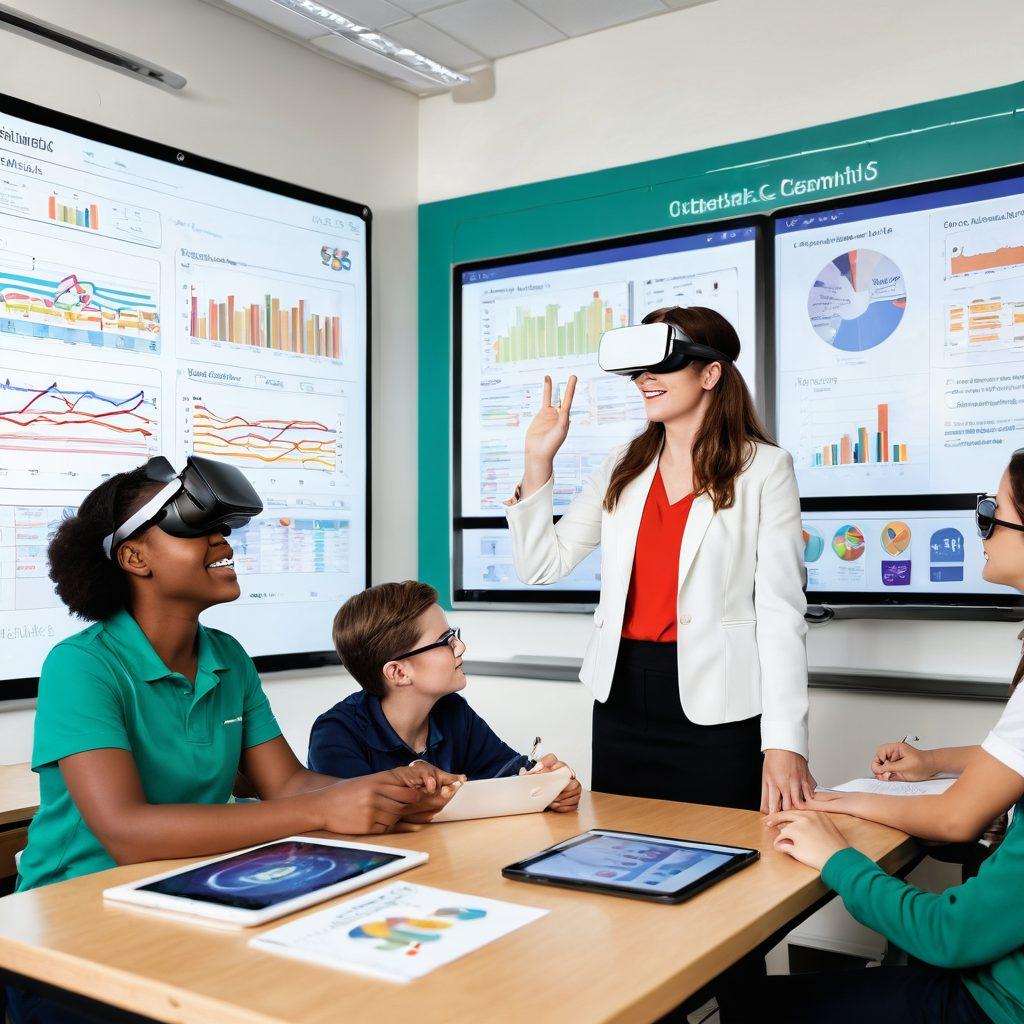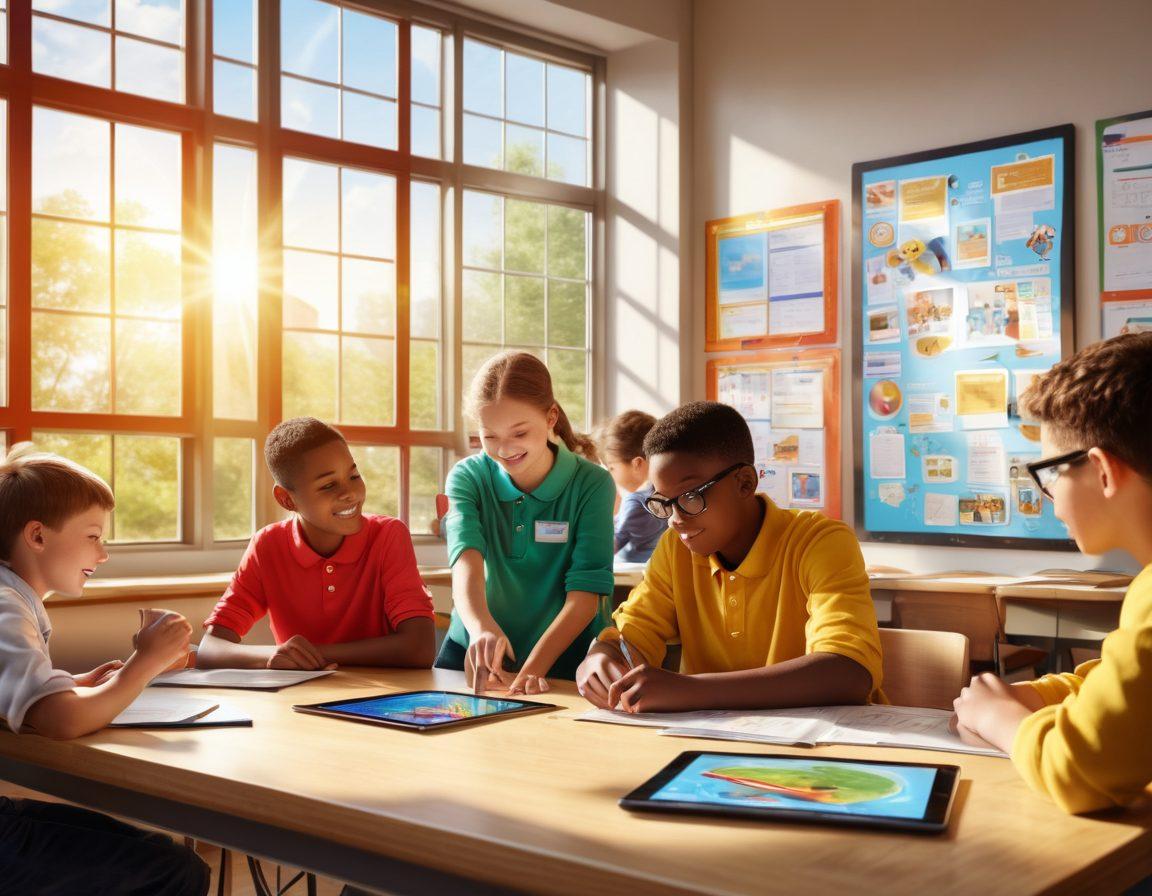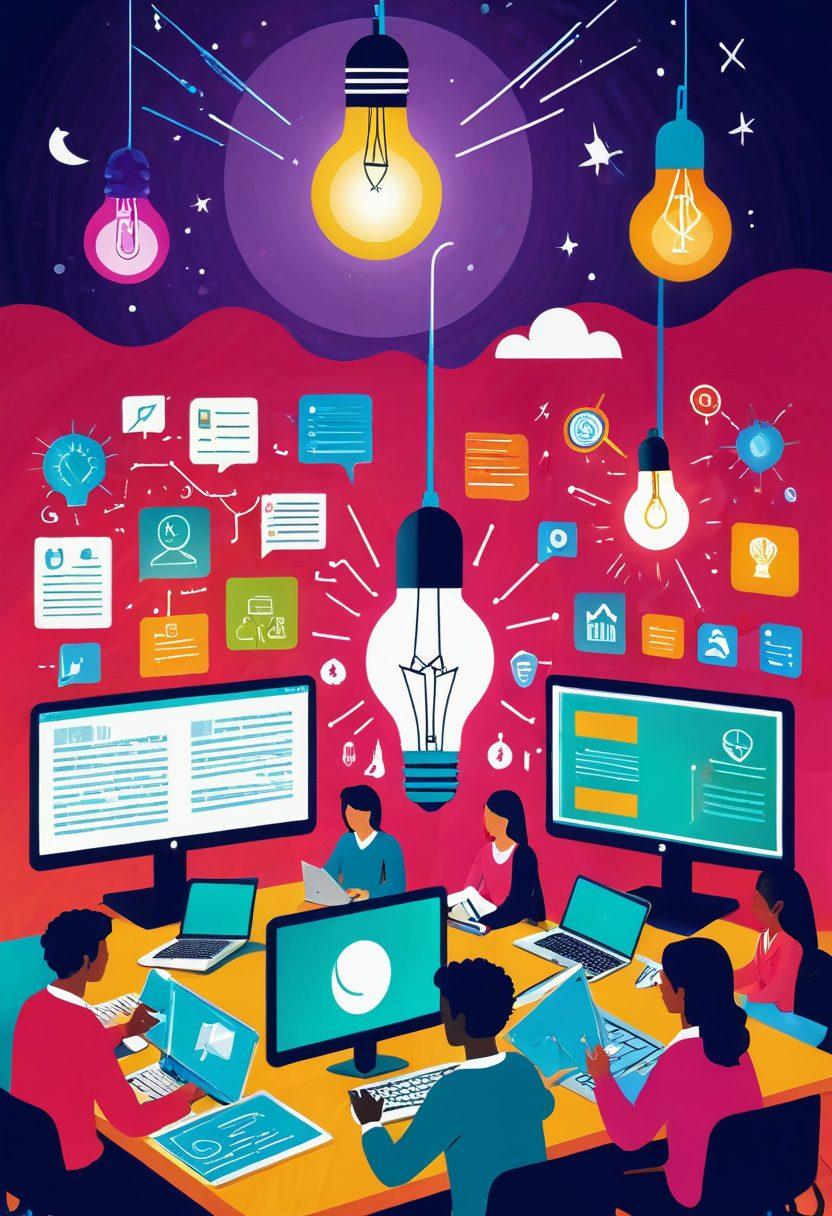Harnessing the Power of E-Learning: Innovative Strategies for Student Engagement and Effective Curriculum Development
In a world increasingly driven by technology, the traditional classroom is evolving into a vibrant digital space. The challenge? Revolutionizing student engagement. Gone are the days when droning lectures dominated the learning landscape. Today’s students demand interactive experiences that captivate their attention and inspire their minds. So, how can educators tap into the full potential of e-learning? Let’s explore innovative techniques that not only enhance student learning but also create a thriving learning community, a focal point of modern education technology.
Picture this: You log into your digital classroom and find yourself immersed in a world of interactive quizzes, engaging discussions, and collaborative projects. Sounds appealing, right? This transformation of the student experience isn’t just a dream; it’s becoming a reality for many educators who are embracing online teaching methodologies. Interactive learning techniques, such as gamification, virtual reality, and live polling, are tools that can reshape how students connect with the curriculum. How can you make these methods work for your classrooms?
At the heart of a successful online learning environment lies the principle of active participation.Studies have shown that when students actively engage with the material, their retention improves dramatically. Instead of passively absorbing information, encourage your students to contribute their ideas and insights. One effective strategy includes using discussion forums where students can debate topics relevant to their subjects. As noted educational thought leader, John Dewey said, "Education is not preparation for life; education is life itself." How are you making your educational blog a living experience for your students?
Another technique to consider is the use of multimedia tools. Video content can transform the mundane into the extraordinary, making complex concepts more digestible. Science lessons come alive with engaging animations, while historical events leap off the screen when paired with documentaries. Integrating various learning resources such as podcasts, infographics, and interactive presentations allows you to cater to different learning styles, ensuring all students find their niche in digital education. Ask yourself: Are your teaching strategies diverse enough to reach every learner?
Finally, empowering students to take ownership of their learning through student tutorials can create a lasting impact on student engagement. Encourage students to create and share their own resources with peers, leveraging their unique understanding and expertise in subjects. Not only does this build confidence, but it also fosters a sense of knowledge sharing within your digital classroom. By cultivating a learning community that values collaboration, you pave the way for a richer educational experience. So, what steps will you take today to transform your school blog into a hub of interactive learning?
Building a Dynamic Curriculum: Essential Strategies for Modern Educators
In the rapidly evolving landscape of modern education, building a dynamic curriculum is paramount for engaging today's students effectively. With the advent of technology, educators now have a multitude of tools at their disposal to create compelling learning experiences. Have you ever wondered how to keep your students not just learning but thriving in an online learning environment? This educational blog will explore essential strategies for modern educators seeking to enhance their curriculum development while fostering student engagement and academic growth.
At the heart of effective curriculum development lies the ability to cater to diverse learning styles. Every student is unique, and building a curriculum that acknowledges these differences is crucial. Picture a classroom bustling with energy, where students are solving problems together, sharing knowledge, and actively participating in their education. How can we foster this kind of dynamic learning community? Incorporating interactive learning strategies such as gamification, collaborative projects, and digital resources can ignite student motivation and make learning not just a task, but an adventure.
One of the most powerful teaching strategies to consider is the integration of technology into the curriculum. In the era of digital education, using e-learning platforms to distribute educational materials allows for flexibility and accessibility, empowering students to take charge of their learning journey. Imagine a student diving into an online tutorial at their own pace, grasping complex concepts from the comfort of their own home. By leveraging educational technology effectively, we can craft a curriculum that not only meets academic standards but also prepares students for the demands of the future.
Additionally, engaging parents as resources can significantly enhance the educational experience. Parents are a treasure trove of knowledge and support, ready to contribute their experiences to the learning process. Consider creating a section in your school blog dedicated to sharing parent resources and encouraging them to participate in school events. How can we make them feel like integral parts of our learning community? By facilitating knowledge sharing, we create an ecosystem where everyone—students, teachers, and parents—plays a vital role in the educational journey.
Finally, patience and flexibility are key virtues for educators embarking on the path of modern curriculum development. The world of distance education often throws unexpected challenges your way, but viewing these challenges as opportunities for growth can lead to innovative solutions. So, what innovative strategies can you adapt in your approach to student learning? Remember, the goal is to inspire and engage students in their educational pursuits. By thoughtfully considering these aspects, you can build a curriculum that resonates with today’s learners and keeps them engaged, motivated, and hungry for knowledge.
Unlocking the Full Potential of E-Learning: Resources and Tools for Success
In a world where technology continues to redefine our everyday experiences, e-learning has become an integral component of education. Imagine a classroom where students eagerly participate from the comfort of their homes, actively engaging with the curriculum and collaborating seamlessly with peers around the globe. This is the future of education: a vibrant, interconnected web of knowledge sharing that transcends traditional boundaries. In this educational blog, we'll dive into the treasure trove of resources and tools available to unlock the full potential of e-learning, ensuring that both students and educators can thrive in this dynamic environment.
Are you ready to step into the expansive world of online learning? The first step is to recognize the plethora of learning resources available today. From e-books and podcasts to interactive online tutoring sessions, educators can enhance their teaching strategies by selecting supplementary materials that resonate with their students' diverse learning preferences. As we all know, one size does not fit all in curriculum development, and utilizing a variety of resources can help us foster a more enriching educational experience. After all, isn't the ultimate goal of education to cater to the unique needs of each learner?
Let’s pause and ask ourselves: What ignites student engagement? One powerful way to keep students motivated is through the incorporation of digital education tools. Think about gamifying lessons or using platforms that facilitate collaborative projects; these are proven strategies to elevate the learning experience. Not only do they make learning more enjoyable, but they also promote a sense of community among distance education learners. Imagine students gathering around a virtual campfire, sharing their thoughts, ideas, and insights—all thanks to technology that enables interaction! So, let’s explore some effective tools that you can introduce into your academic blog or educator blog.
In our quest for effective online teaching, learning communities play an essential role. By establishing a network of support among educators, parents, and students, we can create an environment where everyone thrives. This emphasis on collaboration can transform a standard school blog into a vibrant hub of knowledge sharing. If parents are equipped with the right parent resources to support their children’s learning, and if educators have access to a wealth of school resources, our collective efforts can yield incredible results in student learning. It's a win-win situation that underscores the importance of teamwork in the digital age.
As we look forward to the future of education, it's clear that the integration of e-learning with the right teaching strategies can unleash untold potential in our students. With the right tools at our disposal, combined with an unwavering commitment to fostering an engaging and interactive learning environment, we can pave the way for each learner to flourish. So why not take the plunge? Embrace the innovations that e-learning offers, and watch as your students unlock new levels of understanding and enthusiasm in their educational journeys. The future is bright, and it’s yours to shape!


